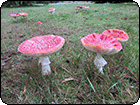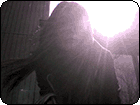AskMecha: I want to take better concert photos. →[More:]I'm really a point-and-shoot user of my camera (Canon PowerShot A95) and am trying to learn. One gripe I have with this camera is it takes like 2 seconds to actually shoot the picture, and I often miss the shot I wanted because of the delay. I'm wondering if this is because I'm using the AUTO mode.
Specifically, I want to take better concert pictures. Indoor, very low to low light. I have a set
here of some shots I took at a concert. These actually didn't come out too bad, other than the fact that I missed some good shots because of my camera delay. But there was an unusual amount of light at that show and I don't expect the show I'm attending tonight will be as well-lit.
My camera has a night mode and a separate "SCENE" mode that has 8 scenes to choose from, among them "night" and "indoor". That gives me four options: AUTO, NIGHT mode, SCENE:INDOOR, or SCENE:NIGHT. Does anyone have this camera or a camera with similar features? Which of these should I use? I can give each a try tonight but it's hard to tell on the tiny screen exactly how nice the pictures are turning out, so if anyone else has experience with these things and can provide advice, I'm all ears.
Also accepting criticism of my picture taking skills in general - framing, etc - if there's any to be had.
Thanks bunnies!
 photo by splunge
photo by splunge
 photo by TheophileEscargot
photo by TheophileEscargot
 photo by Kronos_to_Earth
photo by Kronos_to_Earth
 photo by ethylene
photo by ethylene